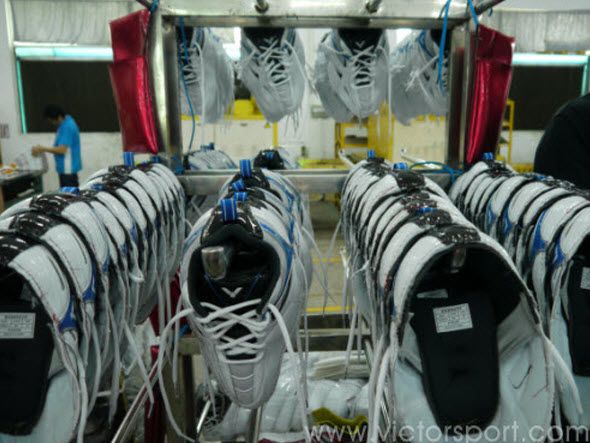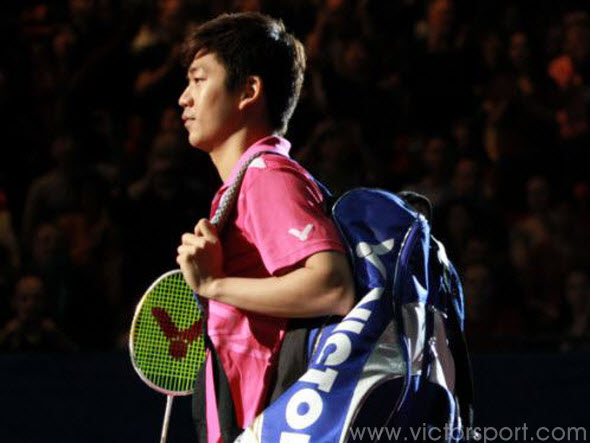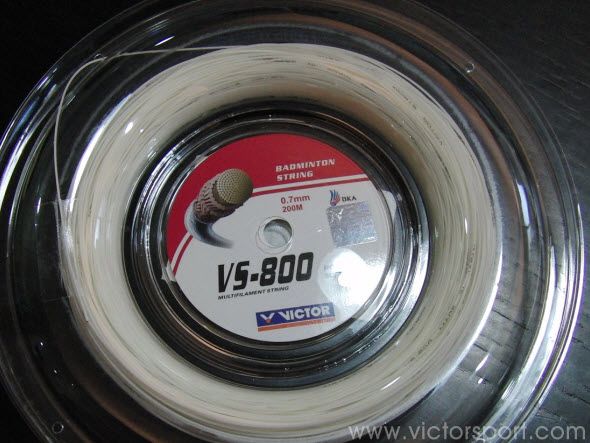Comparison of various types of court

Foreword
Badminton requires quite a few accessories. To get the most enjoyment out of the game it is, of course, necessary to choose the right shuttlecock, shoes, rackets and string…however, apart from these personal accessories, it is also very important to play on a suitable court.
Courts can be indoors or outdoors; as the game is easily affected by the wind most courts are indoors.
A badminton court mainly comprises of the net, the posts and the floor. The court specifications are stipulated in the rules of badminton. The floor is the element that has the biggest effect on players.
The most common floors are PU / PVC, wooden board, acrylic and concrete; in badminton halls, court floors made up of layers of different materials can often be see; for example wooden boards on top of concrete with PU/PVC mats on the top of the wooden boards. The most common court materials will now be introduced below :
PVC / PU
This kind of court has good bounce and anti-slip properties and can be in the form of mats that can be easily laid and stored.
These mats are separated into surface, middle and lower mats;the surface mats are durable and anti-slip, the middle mats add stability, while the lower mats absorb shock and provide bounce.
On this type of surface badminton shoes can produce good traction. Most tournament courts are wooden floors on which these kinds of mats are laid (as in Picture 1,) providing the advantages of both wood and PVU/PU courts;as might be expected, these are the best kind of court.
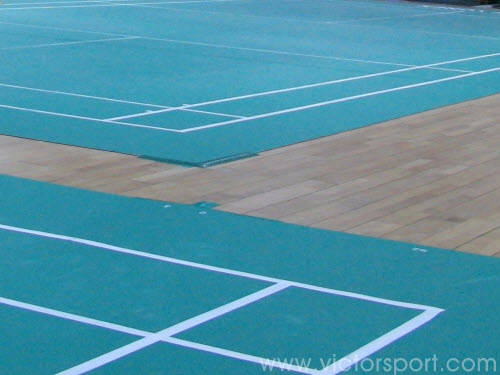
Wooded board
Wooden board courts have relatively good shock absorption but are more slippery than PU/PVC courts. If the court is damp or sweat falls on it, players can easily slip. This kind of court is often seen in integrated sports halls. (Picture 2)
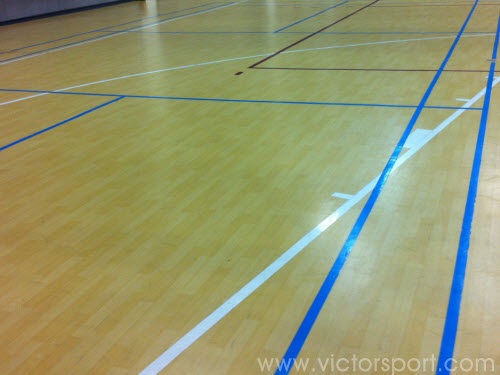
Acrylic
The special features of acrylic courts are that they come in various colors and types. They are similar to PU/PVC courts but harder, with the level of shock absorption depending on the materials under the acrylic floor.
This kind of floor feels slightly uneven when you tread down.
Concrete, polished stone floor
Concrete courts are seen more than polished stone courts outdoors. The former has poor bounce and shock absorption and, if there is dust on them, players can easily slip. People with weak knees and ankles should avoid playing for long periods of time on these kinds of court.
After reading this, do you now have a better understanding of badminton courts? We strongly recommend that you play on a specialized badminton court !






